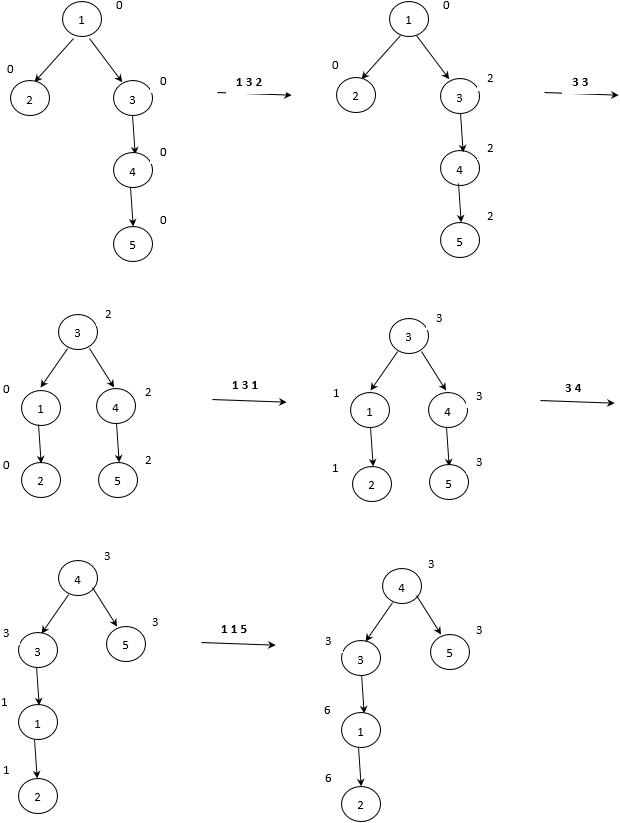Programming contestsECN programozó csapatverseny, 2019. május 11.
May 11, 2019, 10:15 AM –
May 11, 2019, 3:15 PM
|
A Job for a Slicer
You are a slicer (hacker) on board of a rebel cruiser with the mission of freeing an essential ally of the Galactic Empire, but to do that, you have to get access to the main terminal using a special card. The terminal has an internal algorithmic problem and a couple of some input tests, which are daily randomly generated. The terminal expects to get the same output from its internal code and the card's code.
You have just a blank card and the statement for the algorithmic problem that must be solved to print the code on the card. The statement sounds like this:
You are given a rooted tree, where node 1 is the root. The tree has N nodes, and each node has an initial value of 0. You are also given Q queries of 3 types:
-
1 u v: add value v to all nodes in the subtree with root u; 2 x: print the value of node x;3 r: make node r the new root of the tree.
Input Specification
The first line contains a single number N, which represents the number of nodes (2 ≤ N ≤ 100 000).
Each of the next N – 1 lines contains two numbers separated by a space: a and b, which means that there is an edge between node a and node b.
The next line contains a number Q, which represents the number of queries (1 ≤ Q ≤ 100 000).
Each of the next Q lines contains one of the following types of queries mentioned above:
- The first type of query contains three numbers separated by spaces. The first number is 1, which indicates it's the first type of query, the second number is u indicating the root of the subtree, and the third number is the value v that must be added to each node in the subtree (–1000 ≤ v ≤ 1000).
- The second type of query contains two numbers separated by spaces. The first number is 2, which indicates it's the second type of query, and the second number is x indicating the node whose value must be printed.
- The third type of query contains two numbers separated by spaces. The first number is 3, which indicates it's the third type of query, and the second number is r indicating the new root of the tree.
Output Specification
The output should contain a single number for each query of type 2 on a different line, indicating the value of node x.
Sample Input
51 21 33 44 5101 3 23 31 3 13 41 1 52 12 22 32 42 5
Output for Sample Input
66333
Explanation

As it can be seen here, the answer for the last five queries in order are 6, 6, 3, 3, 3.